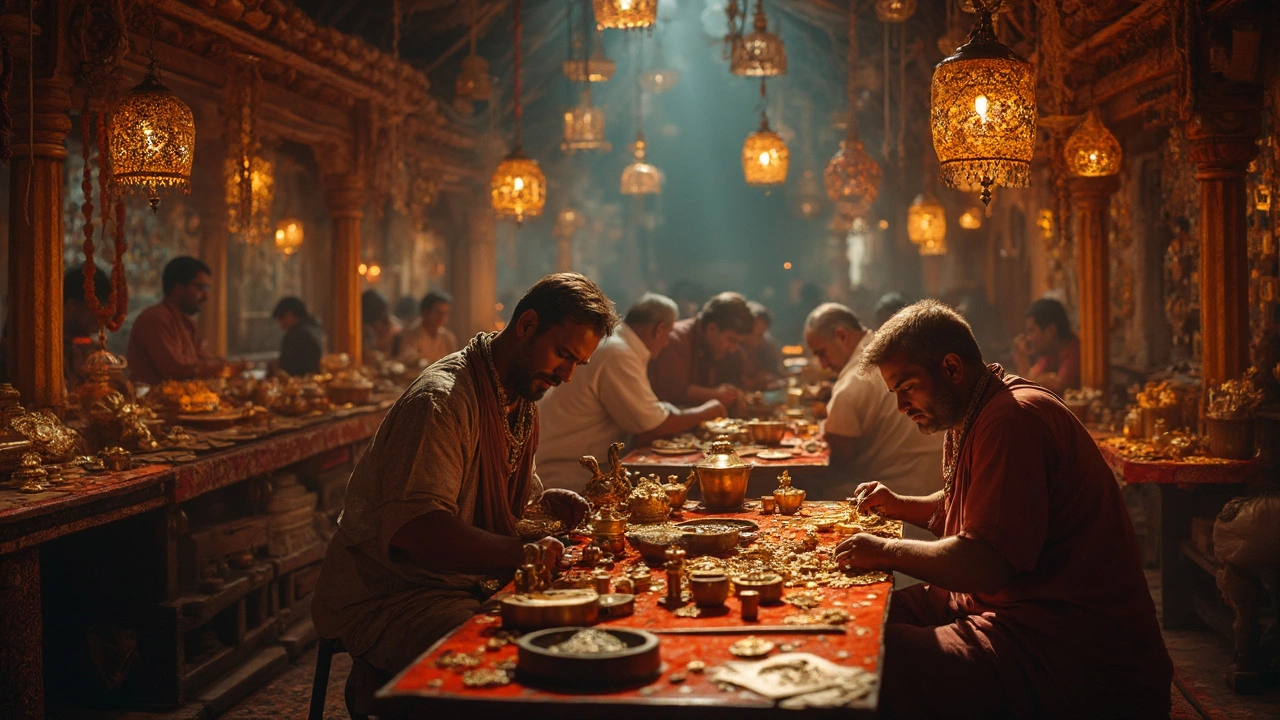Ancient Ornaments – Traditional Indian Jewellery
When talking about ancient ornaments, the timeless pieces that have adorned Indian bodies for centuries. Also known as traditional jewellery, ancient ornaments blend art, ritual, and daily life. They aren’t just accessories; they’re symbols of identity, status, and love. Below we’ll see how these pieces connect to everyday fashion and deeper cultural stories.
Key Pieces that Define Ancient Ornaments
One of the most iconic items is the Mangalsutra, the sacred necklace tied by a husband during a Hindu wedding. It represents marital commitment and often features gold, black beads, and intricate pendants. Another staple is the Bangles, stackable bracelets traditionally given to brides. Bangles come in glass, gold, or enamel and signal prosperity. The Nose pin, a tiny stud or ring worn on the nostril carries regional meanings, from beauty to fertility. Together with the choora – a set of red and white bangles worn by Punjabi brides – these items form a rich tapestry of heritage.
Ancient ornaments encompass a range of materials. Gold, especially 22K and 24K, is prized for its purity; the 750 stamp you see on many pieces means 75% gold content, equivalent to 18K. Silver and copper often appear in regional designs, while gemstones like diamonds, emeralds, and pearls add sparkle and status. The choice of metal influences value, durability, and cultural acceptance. For example, a 1‑gram gold pendant can provide the look of solid gold at a fraction of the price, making it a favorite for fashion‑forward shoppers.
These ornaments don’t stay locked in the past. Modern Indian fashion blends ancient motifs with contemporary cuts – think chunky chains that echo mangalsutra links, or minimalist nose pins that reference traditional studs. 2025 jewellery trends highlight natural gemstones, bold statements, and mixed‑metal pieces, proving that ancient designs still inspire fresh looks. Whether you’re dressing for a wedding or a casual brunch, a classic bangle or a simple nose pin can instantly elevate an outfit.
Buying ancient ornaments today means balancing heritage with smart investment. Look for hallmark stamps like 750 or 916 to verify gold purity, and check certification for diamonds. High‑quality pieces stand out through consistent weight, solid clasps, and reputable makers. Knowing the symbolism helps you choose items that resonate personally – a mangalsutra for marriage, a set of bangles for family celebrations, or a nose pin that matches your face shape. The right piece can become a heirloom passed down through generations.
Below you’ll find a curated collection of articles that dig deeper into each of these topics. From the etiquette of gifting a mangalsutra to the price differences between gold in India and the USA, the posts cover history, buying guides, and style tips that will help you make informed choices about ancient ornaments and their modern adaptations.
